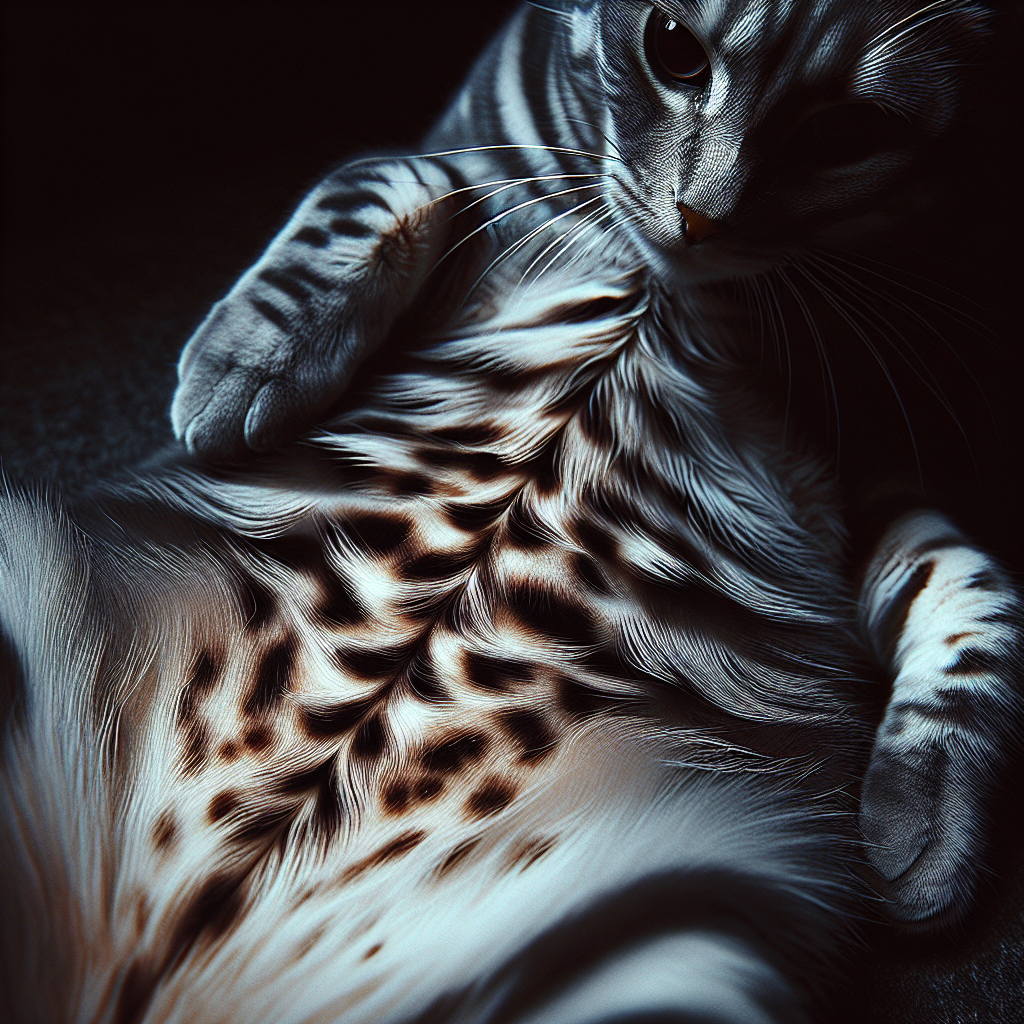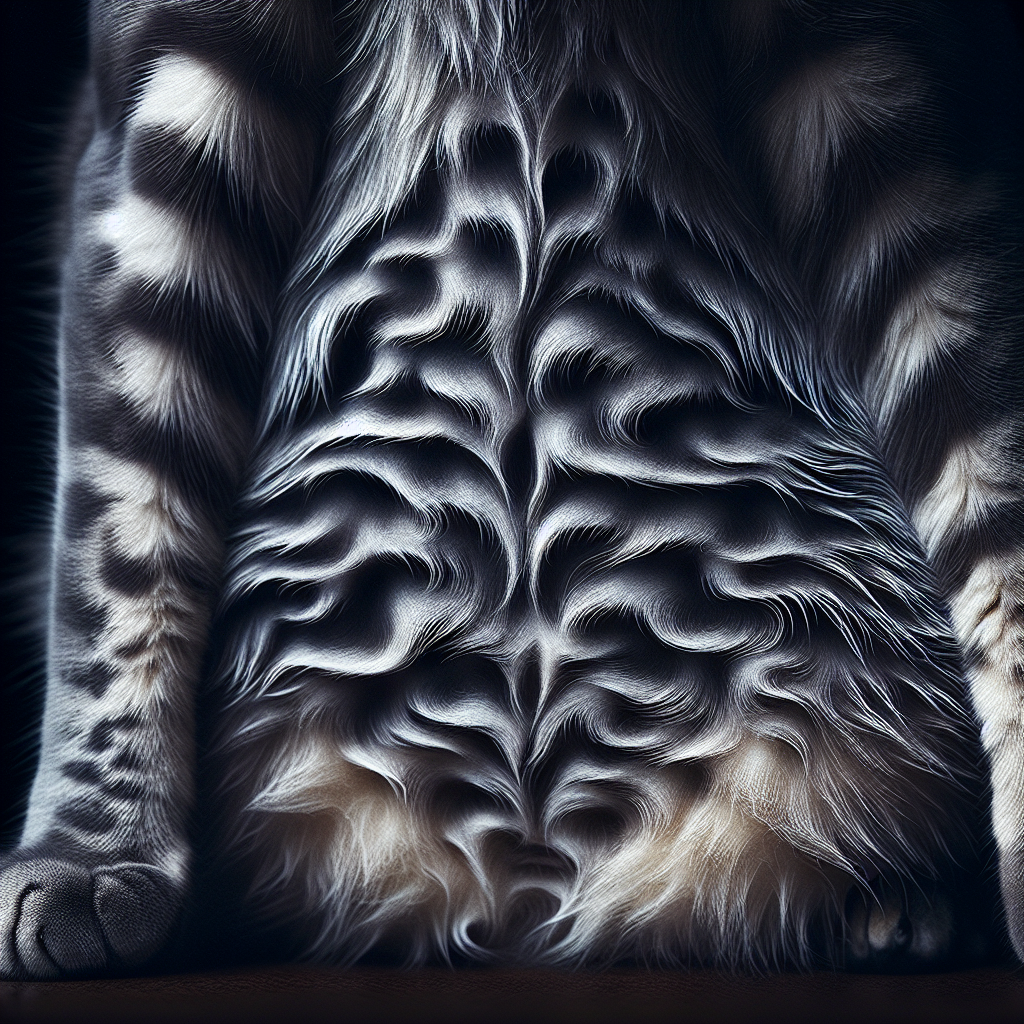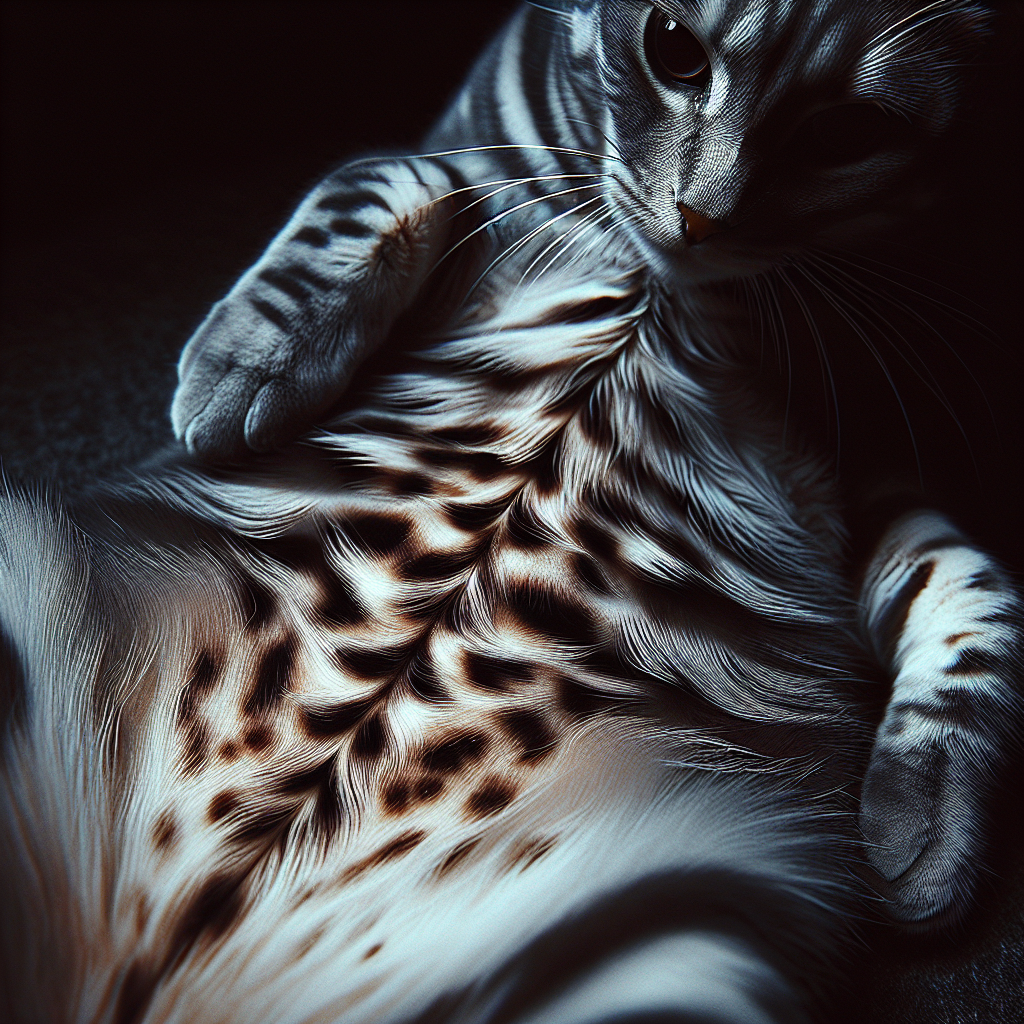Have you ever wondered if grey tabby cats have spotted bellies? Grey tabby cats are known for their beautiful striped coats, but what lies beneath? In this article, we will explore the fascinating world of grey tabby cats and uncover the truth about their bellies. Get ready to be amazed by the secrets that lie within these adorable felines!
Coloration of Grey Tabby Cats
Grey tabby cats are known for their beautiful and unique coat patterns, tabby markings, and variations in belly color. These distinctive features make them easily recognizable and add to their charm. In this article, we will explore each aspect in detail, providing information to help you better understand the coloration of grey tabby cats and appreciate their individuality.
Coat Patterns
Tabby Cat Definition
Before delving into the specific coat patterns, it’s essential to understand what exactly makes a cat a “tabby.” Tabby is not a breed but a coat pattern that can be found in various cat breeds, including the grey tabby. Tabby cats have a characteristic coat pattern that includes swirling, stripes, or spots on their fur.
Types of Tabby Patterns
There are three main types of tabby patterns: mackerel, classic, and spotting. Each pattern has its unique characteristics and can vary in intensity and appearance.
Mackerel Tabby Pattern
The mackerel tabby pattern is characterized by narrow, parallel stripes that resemble fishbones. These stripes run vertically down the cat’s body, from the spine to the belly. The mackerel tabby pattern is prevalent among grey tabby cats and adds a distinct elegance to their appearance.
Classic Tabby Pattern
The classic tabby pattern, also known as the blotched tabby, features bold swirling patterns on the cat’s sides, creating a marbled or bulls-eye effect. This pattern is often seen in orange tabbies but can also be found in grey tabbies. The classic tabby pattern gives the cat a more intricate and intricate look.
Spotting Tabby Pattern
The spotting tabby pattern, as the name suggests, consists of large, distinct spots on the cat’s coat. These spots can vary in size and shape, ranging from round to elongated. While it is less common in grey tabby cats, some individuals may display a spotting tabby pattern, resulting in unique and eye-catching markings.

Tabby Markings
Distinctive Features
In addition to the overall coat patterns, tabby cats have specific markings that further contribute to their visual appeal. These markings are often found on the cat’s face and include patterns such as the M-pattern on the forehead, lining around the eyes, cheek and whisker pad patterns, and even a necklace or scarf-like marking.
M-pattern on Forehead
One of the most recognizable tabby markings is the M-pattern found on the cat’s forehead. This distinct feature adds character to the cat’s face and is formed by darker fur that creates an inverted “M” shape between the cat’s ears. It is believed that the M-pattern has roots in ancient Egyptian mythology, where cats were highly regarded.
Lining around Eyes
Tabby cats often have dark lines or markings around their eyes, enhancing their overall facial expression. These lines, known as mascara lines, give the cat a striking and mysterious appearance. The mascara lines can vary in intensity, ranging from subtle to more pronounced, further accentuating the cat’s natural beauty.
Cheeks and Whisker Pads
Another area where tabby markings can be observed is on the cheeks and whisker pads. Some tabby cats have distinct patterns, such as dots or lines, on their cheeks, giving them a unique facial feature. The whisker pads can also be outlined with darker fur, adding definition to the cat’s face and highlighting their adorable whiskers.
Necklace or Scarf
Certain tabby cats may exhibit a pattern that resembles a necklace or scarf around their neck. This marking can be a continuous band of darker fur encircling the neck area or consist of distinct spots. It adds an extra touch of elegance and elegance to the cat’s appearance, making them even more captivating.
Spotted and Marbled Tabby Markings
In addition to the common tabby markings mentioned above, some grey tabby cats may have variations such as spotted and marbled tabby markings. These markings can occur in conjunction with the overall coat pattern and add an extra layer of complexity and individuality to the cat’s appearance. Spotted tabby markings consist of scattered spots, whereas marbled tabby markings create a swirling or marbled effect on the fur.
Variations in Belly Color
Typical Belly Coloration
The belly coloration of grey tabby cats can vary from cat to cat. In some individuals, the belly color may closely match the color of the rest of the coat, while in others, it may have distinct differences.
Ticking Effect
The ticking effect refers to the presence of multiple color bands on each individual hair strand. This effect creates a unique speckled or “salt and pepper” appearance, adding depth and texture to the cat’s overall coat. While the ticking effect is often seen in the coat, some grey tabby cats may also exhibit this effect on their bellies.
Spotted Bellies
Spotted bellies are another variation of belly coloration that grey tabby cats may exhibit. This occurs when the belly has scattered spots, similar to the spotted tabby pattern seen on the rest of the coat. The size and shape of the spots can vary, resulting in a truly unique and eye-catching appearance.
Marbled Bellies
In contrast to spotted bellies, marbled bellies feature a swirling or marbled pattern on the belly area. These patterns can resemble intricate marble or swirling ink designs and further enhance the cat’s individuality and charm.

Factors Influencing Belly Coloration
Genetic Factors
The coloration and markings of a grey tabby cat’s belly are influenced by genetic factors. Genes play a significant role in determining the distribution and intensity of color on the belly and overall coat. Different combinations of genes can result in various belly color patterns, further adding to the diversity seen in grey tabby cats.
Age and Development
The belly coloration of grey tabby cats can change as they grow and develop. Kittens may have a lighter or less distinct belly color, which may become more pronounced and defined as they mature into adult cats. Therefore, it is important to consider the cat’s age when observing and appreciating their belly coloration.
Health and Nutrition
The overall health and nutrition of a grey tabby cat can also impact their belly coloration. A balanced diet that meets all their nutritional needs can contribute to vibrant and healthy coat coloration, including the belly area. Regular veterinary check-ups and a high-quality diet are essential to ensure your grey tabby cat’s coat remains in optimal condition.
Conclusion
Grey tabby cats exhibit a wide range of coat patterns, tabby markings, and variations in belly color. Each cat is unique in their appearance, adding to the charm and individuality of these wonderful feline companions. By understanding the different coat patterns, tabby markings, and factors influencing belly coloration, you can develop a deeper appreciation for the coloration of grey tabby cats and the fascinating world of tabby cat genetics. So the next time you encounter a grey tabby cat, take a moment to admire their beautiful coat and recognize the complexity and beauty that lies within their coloration.

